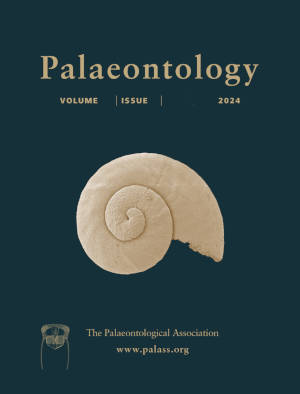Article: Detection of intact polyene pigments in Miocene gastropod shells
Publication: Palaeontology
Volume:
67
Part:
1
Publication Date:
2024
Article number:
e12691
Author(s):
Klaus Wolkenstein, Burkhard C. Schmidt, and Mathias Harzhauser
Abstract
Abstract Polyene pigments represent a major class of pigments in present-day organisms. Their occurrence in fossils has been frequently discussed, but to date no spectroscopic evidence has been found. Here, we use in situ Raman spectroscopy to examine the chemistry of exceptionally well-preserved gastropod shells with colour preservation from the Middle Miocene of the Vienna Basin (Austria, Hungary). Raman signals indicative of the presence of intact (i.e. non-hydrogenated) polyene pigments were obtained from fossil shells with reddish colour patterns, thus revealing the first record of intact polyenes in fossils. The observed Raman values are in good agreement with those of unmethylated (non-carotenoid) polyenes. Fossil polyene pigments were detected in representatives of the superfamily Cerithioidea, but not in representatives of other gastropod families with colour preservation found at the same localities, demonstrating that the occurrence of polyene pigments is taxon-specific. Our results show that Raman spectroscopy represents a valuable tool for the non-destructive screening of rare fossils with colour preservation for the occurrence of polyene pigments.
